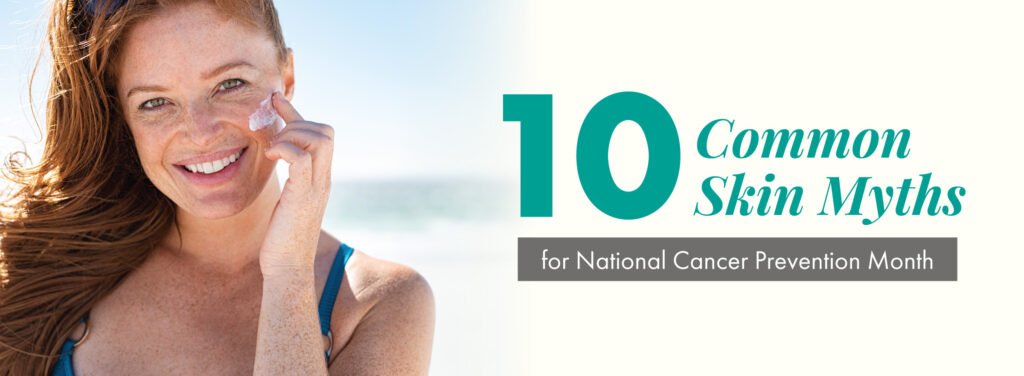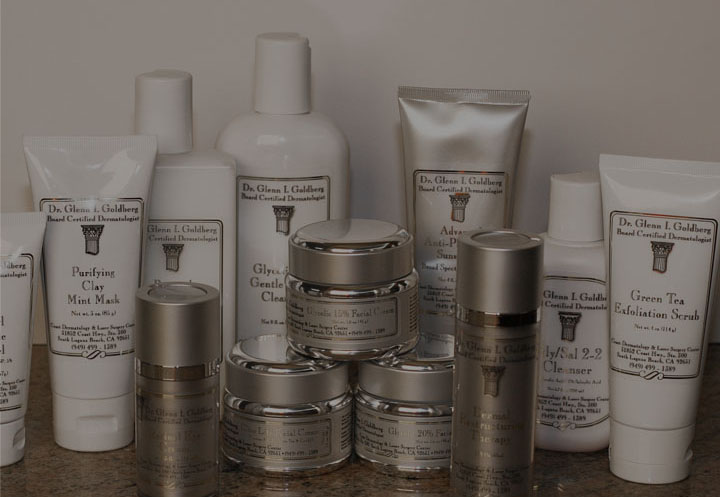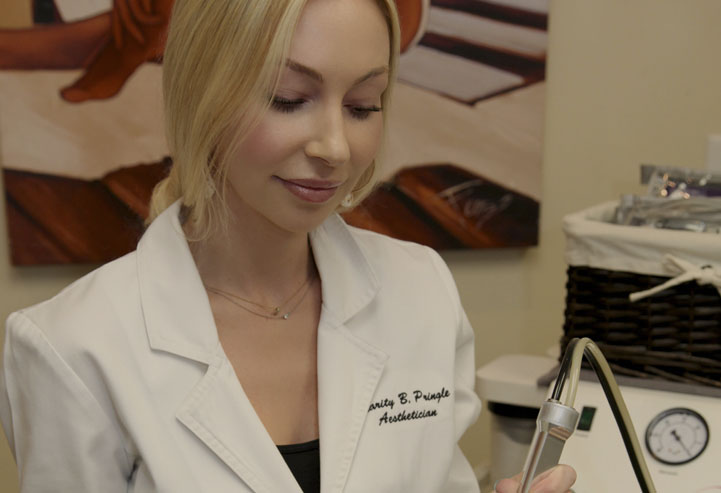10 Common Skin Cancer and Sun Damage Myths for National Cancer Prevention Month

Let’s celebrate National Cancer Prevention Month by revealing the truth behind some common skin cancer and sun damage myths. You’ve probably heard plenty of these untruths, and we’re here to set the record straight. Ready? Let’s dive right in.
MYTH 1: You don’t need to wear sunscreen if your foundation has SPF.
The truth is that you still need to wear sunscreen under your SPF foundation. That’s because you need an amount of sunscreen the size of a quarter to fully protect your face. And you don’t generally wear this much foundation. You would have to wear your foundation very thick to get the full SPF benefit promised on the bottle. So, apply sunscreen before your foundation (and remember your eyelids, ears, neck, and chest area too.) The SPF in your foundation could be helpful, but don’t count on it for full protection.
MYTH 2: Tanning beds are safer than the sun.
There is no such thing as a safe tan from a tanning bed or the sun. The only safe tan comes in a bottle. Self-tanning lotions are the way to go if you enjoy a bronzed look.
MYTH 3: Chemical sunscreen is harmful.
Our dermatologists say chemical sunscreen is not bad for your skin. It’s considered effective and a lot safer than no sunscreen. You can always choose a physical (mineral) sunscreen instead if you have any reservations about using a chemical one.
MYTH 4: UVA and UVB rays do the same thing to your skin.
These two types of rays damage your skin differently. While UVA (Ages) your skin, UVB (Burns) it. That’s why you need broad-spectrum sunscreen to protect you from both types of rays.
MYTH 5: The windows in your house block all the sun’s damaging rays.
Your house’s windows block UVB rays. So, it’s not likely you’ll get a sunburn while sitting under direct sunlight in your house. But your skin is still exposed to UVA rays, which age it. Regular glass in homes does not filter out UVA rays. Wear sunscreen on your face and body every day, even if you plan to stay inside.
MYTH 6: Skin cancer is something you only get when you’re old.
Melasma affects plenty of young people in their mid to late twenties. It’s the most common form of cancer in young adults in this age group. So, pay attention to moles and see your doctor for a skin check if they change.
MYTH 7: Only light-skinned people get skin cancer.
Everyone is susceptible to skin cancer. Even people with the darkest skin tones are at risk. You need to wear sunscreen daily and protect yourself regardless of your skin color.
MYTH 8: Skin cancer is rare. Skin cancer is the most common form of cancer in the world. It affects one in five people. That’s right, 20 percent of people will get some form of skin cancer during their lifetime. It helps to know your risk is real so you can take prevention seriously.
MYTH 9: You don’t need to wear sunscreen in the winter. The sun continues to cause DNA damage, cancer, and premature aging year-round, even in the winter. Just because it’s winter doesn’t mean the sun stops shining. It’s with us. Every. Single. Day. And so are its damaging rays. Slather on a broad-spectrum SPF 30+ sunscreen regardless of the season.
MYTH 10: Clouds block all the harmful rays from the sun.
Clouds reduce some of the sun’s UV rays, but not nearly enough to protect your skin from cancer. That’s why the Skin Cancer Foundation recommends you wear sunscreen on cloudy days. Remember, the only time you’re entirely protected is at night when the sun is down. You’ve just read the truth about skin cancer and sun damage myths and now you’re better prepared to protect yourself. What a great way to celebrate National Cancer Prevention Month! The only bigger step you can take is to join hundreds of our patients who have booked their annual skin checkup.





